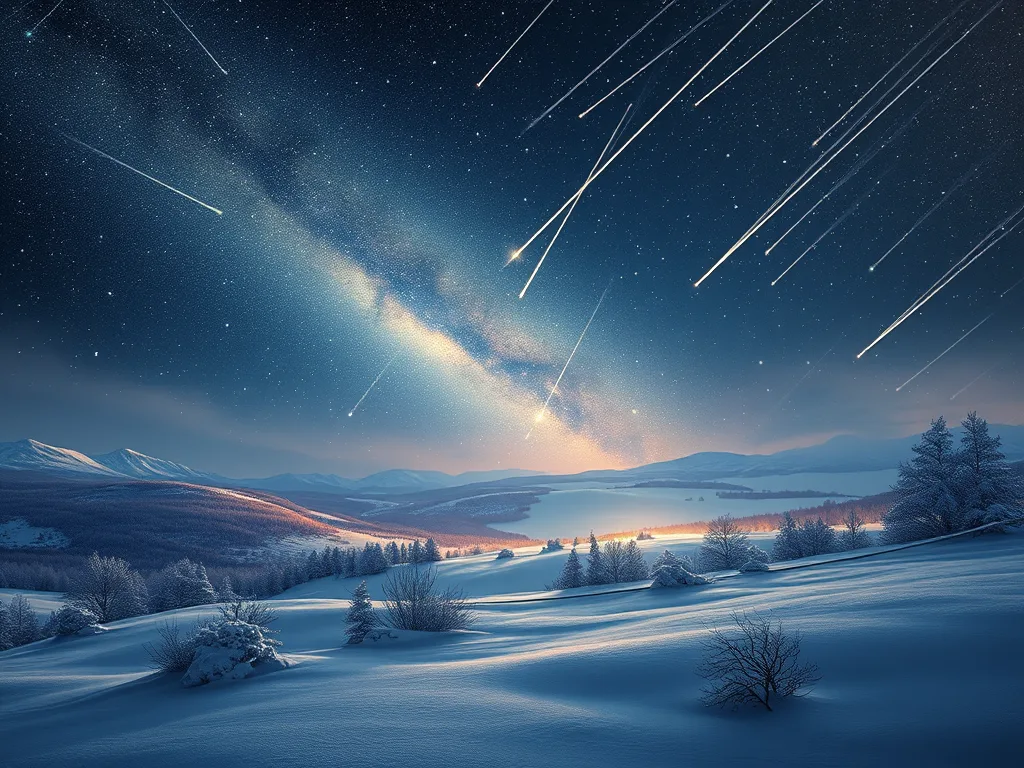astronomy
Stargazing Delight: Catch the Ursid Meteor Shower This Sunday Morning!

As we cozy up to the end of another year, a delightful celestial event is gearing up to grace our skies: the Ursid meteor shower! Set to peak in the early morning hours of Sunday, December 22, this final meteor shower of the year offers a charming opportunity for some stargazing, even amidst the hustle and bustle of the holiday season.
A Little Background on the Ursids
Often overshadowed by the more prolific Geminid meteor shower that dazzles us just a week earlier, the Ursids tend to be a quieter affair. This year, their peak aligns perfectly with the winter solstice—the shortest day and longest night of the year. With the celestial display taking place during this time, there’s a unique chance to soak in some twinkling “shooting stars” above a snowy landscape.
Why Aren’t More People Watching?
Despite their charm, the Ursids are the least observed meteor shower, largely because of the busy holiday season and often unfavorable weather in the Northern Hemisphere—think cold nights filled with clouds. But if you missed the Geminids, fear not! The Ursids provide a wonderful pre-Christmas stargazing treat that is worth a look.
What to Expect from the Ursids
While the Ursids are not renowned for their activity—often delivering a mere 5 to 10 meteors per hour on a good night—there’s still magic in the unpredictability of astronomy. In years past, this meteor shower has surprised us with spectacular displays. Back in 1945 and 1968, observers saw around 100 meteors per hour, while the 1973 shower brought forth about 30 meteors! You never know when the Ursids may decide to put on a show, so keeping your eyes trained on the heavens could lead to some delightful surprises.
Understanding the Ursid Origin
The Ursids get their name from their radiant point in the sky, located in the constellation Ursa Minor, affectionately known as the Little Dipper. What we see as shooting stars are actually small fragments from the comet 8P/Tuttle, which Earth passes through each year. As the debris from the comet enters our atmosphere, it burns up and creates stunning streaks of light against the nighttime backdrop.
Tips for Optimal Viewing
So, how can you maximize your chances of catching the Ursid meteor shower this Sunday?
- When to Watch: The Ursids run from December 17 to December 26, with the best viewing time occurring in the predawn hours of December 22. This is when the radiant is highest in the sky, offering the best chance to see those elusive meteors.
- Find a Dark Spot: Get as far away from city lights as possible. A clear, dark sky will make it much easier to see the meteors.
- Be Patient: Give your eyes time to adjust to the darkness—about 20 minutes is ideal. Bring a comfortable blanket or chair to sit back and enjoy the show.
- Check the Weather: Clear skies are essential! Keep an eye on your local weather conditions to ensure a pleasant viewing experience.
- Bring a Friend: Stargazing is always more fun when shared! Grab a friend or family member to join you, bringing some hot cocoa for added warmth and comfort.
As you bundle up and head outside this Sunday morning, remember to take a moment to appreciate the vastness of the universe above us. The Ursids may be a modest display compared to their more boisterous meteor shower counterparts, but each little shooting star tells a story of cosmic wonder and beauty. Happy stargazing, and may your sky be filled with twinkling lights! ✨
Related Ursid Link:
Planetary.org: The Ursid meteor shower 2024: How to watch
The science section of our news blog STM Daily News provides readers with captivating and up-to-date information on the latest scientific discoveries, breakthroughs, and innovations across various fields. We offer engaging and accessible content, ensuring that readers with different levels of scientific knowledge can stay informed. Whether it’s exploring advancements in medicine, astronomy, technology, or environmental sciences, our science section strives to shed light on the intriguing world of scientific exploration and its profound impact on our daily lives. From thought-provoking articles to informative interviews with experts in the field, STM Daily News Science offers a harmonious blend of factual reporting, analysis, and exploration, making it a go-to source for science enthusiasts and curious minds alike. https://stmdailynews.com/category/science/